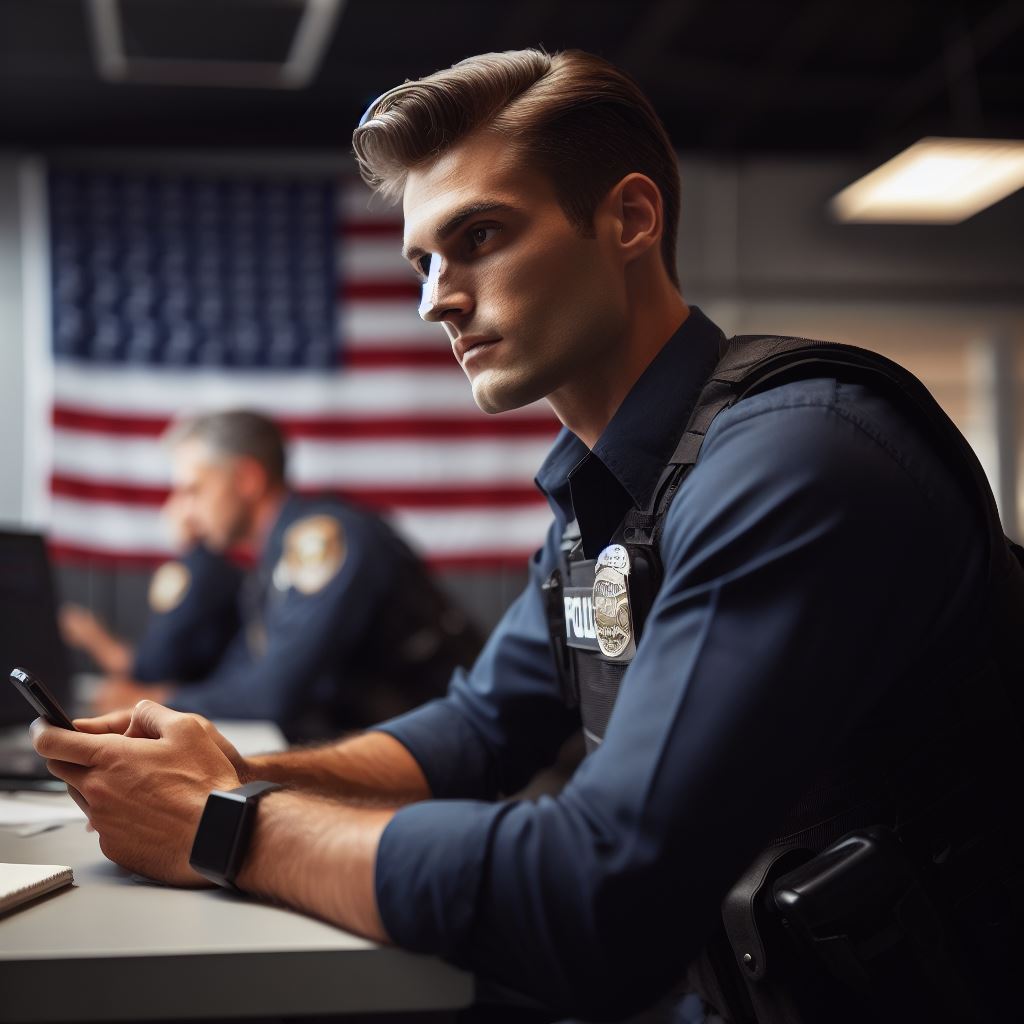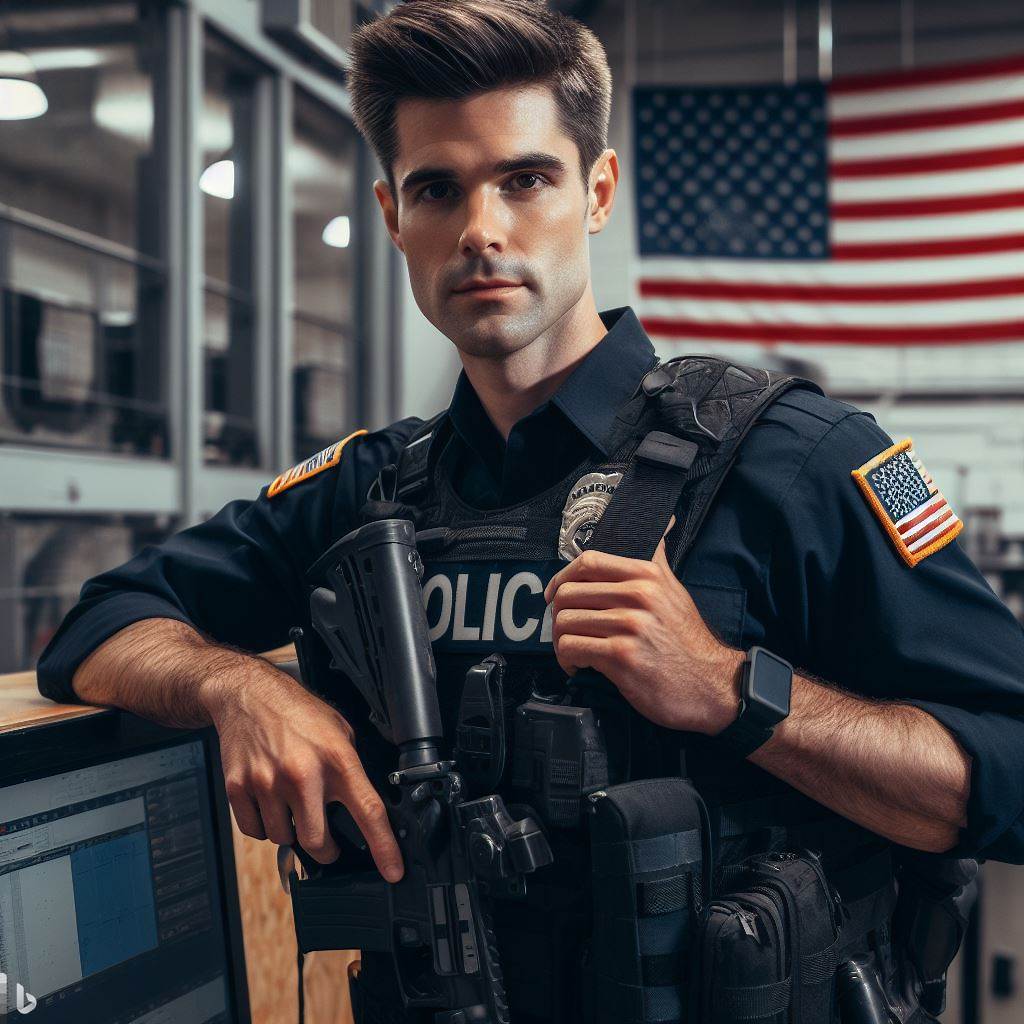Introduction
Importance of tools and technology for police officers
The modern police officer relies heavily on various tools and technologies to enhance their effectiveness and efficiency in performing their duties. we will discuss the Police Officer Tools and Tech in this article.
In today’s ever-evolving world, the role of a police officer goes beyond traditional law enforcement.
With the advancement of tools and technology, they have access to a wide array of resources that aid them in their daily tasks.
These tools not only make their jobs easier but also help them in maintaining law and order more effectively.
The modern police officer relies heavily on various tools and technologies
One of the major advantages of tools and technology is the ability to gather and analyze information swiftly. Police officers can now access databases of criminal records and other relevant information instantly.
This allows them to identify suspects, track their movement, and gather evidence efficiently.
In addition, technologies like facial recognition software and CCTV cameras assist in identifying criminals, leading to quicker arrests and improved public safety.
Moreover, tools like body cameras and dashboard cameras provide reliable evidence during investigations and legal proceedings.
These recording devices offer transparency and accountability, ensuring that both the police officer and the general public are protected.
They have become an important tool in maintaining trust between law enforcement agencies and the communities they serve.
Communication tools have also significantly improved the efficiency of police work.
Mobile devices and radios allow officers to stay connected with their colleagues on the field, enabling swift coordination and response during emergencies.
These tools ensure that officers can quickly share information, request backup, and coordinate efforts to apprehend suspects.
In general, the use of tools and technology is of paramount importance to the modern police officer.
These tools enhance their effectiveness, expand their capabilities, and ultimately contribute to the safety and security of the communities they serve.
As technology continues to advance, it is crucial for law enforcement agencies to adapt and embrace these tools to stay ahead in the ever-evolving landscape of policing.
Historical background of tools and technologies in policing
Early tools used by police officers
- Handcuffs: Initially made of wood, metal handcuffs became a common tool for restraining criminals.
- Lanterns: These handheld light sources were crucial for police officers during nighttime patrols.
- Whistles: Used to alert nearby officers or call for assistance during emergencies.
- Batons: A basic tool for self-defense, batons were used to subdue unruly suspects.
Technology has greatly transformed the tools and techniques used by police officers. Early tools such as handcuffs, lanterns, whistles, and batons were primitive compared to the modern advancements.
The introduction of police radios in the 1920s revolutionized communication in law enforcement, ensuring quick response times and coordinated efforts.
Evolution and advancements in technological tools over time
- Telecommunication: The introduction of police radios in the 1920s revolutionized communication between officers.
- Firearms: Traditional firearms were replaced with more advanced and efficient weaponry.
- Patrol vehicles: Horse-drawn carriages gave way to motorized patrol cars, increasing mobility and response time.
- Forensic tools: Advancements in DNA analysis, fingerprinting, and ballistics greatly enhanced investigative capabilities.
Advancements in weaponry have also been significant, with traditional firearms being replaced by more advanced tools.
Patrol vehicles, initially horse-drawn carriages, transitioned to motorized cars, improving mobility and enabling rapid responses to emergencies.
Forensic tools have played a pivotal role in solving crimes. DNA analysis, fingerprinting, and ballistics have enhanced investigators’ capabilities, providing concrete evidence for identifying and prosecuting criminals.
Impact of technology on policing practices
- Surveillance systems: CCTV cameras and drones provide crucial evidence and deter crime.
- Data analysis: Police departments leverage advanced software to analyze crime patterns and allocate resources effectively.
- Mobile devices: Officers now have access to information databases, enabling real-time identification of suspects.
- Non-lethal weapons: Technology has led to the development of tools like tasers and pepper sprays for safer suspect restraint.
The impact of technology on policing practices extends beyond physical tools. Surveillance systems, such as CCTV cameras and drones, have become integral to crime prevention and collecting valuable evidence.
Data analysis software helps police departments identify crime patterns and allocate resources effectively.
The introduction of mobile devices has revolutionized the way officers handle information.
They can access databases in real-time, enabling quick suspect identification and providing critical information while on the field.
Another significant development is the availability of non-lethal weapons, enhancing officer safety while apprehending suspects.
Tools like tasers and pepper sprays allow for safer suspect restraint, reducing the need for lethal force.
Generally, the historical background of tools and technologies in policing showcases the constant evolution and advancements made to enhance law enforcement practices.
From simple handcuffs and lanterns to sophisticated surveillance systems and advanced forensics, technology has significantly impacted policing throughout history.
These developments enable officers to carry out their duties more effectively, improving public safety and ensuring justice.
Read: Diversity in U.S. Fire Departments: Current Trends
Essential tools in the modern police officer’s toolkit
Firearms and defensive equipment
Proper training with firearms is of utmost importance for modern police officers. It ensures that they can effectively handle their weapons, reducing the risk of accidents and unintended harm.
By receiving comprehensive training in firearm safety and proper handling, officers become more confident and proficient in their duties.
However, it is also crucial for officers to have non-lethal alternatives at their disposal. Tasers and pepper spray are two common options.
These less-lethal tools provide officers with alternative means of subduing suspects without resorting to deadly force.
This is particularly important when dealing with individuals who may be unarmed or pose minimal threat.
Communication devices
Communication devices play a vital role in the daily operations of police officers. Radios, for example, allow officers to stay connected, enabling effective coordination and swift response to emergency situations.
Clear and efficient communication is essential in maintaining officer safety and ensuring the successful resolution of incidents.
Mobile data terminals further enhance communication capabilities by providing real-time access to critical information.
Officers can quickly retrieve details about suspects, vehicle registrations, and warrant statuses, aiding decision-making on the field.
These devices also contribute to improved situational awareness, allowing officers to make informed judgments based on accurate and up-to-date data.
Advancements in vehicle technology have significantly enhanced the capabilities of modern police vehicles.
Enhanced suspension and high-performance brakes ensure optimal handling and maneuverability, allowing officers to navigate challenging terrains and respond swiftly.
Bullet-resistant windows provide increased protection, minimizing the risk of injuries during encounters with armed suspects.
Vehicle technology
GPS tracking and navigation systems are invaluable tools for police officers. These systems enable officers to pinpoint their location, locate suspects, and track stolen vehicles.
Timely and accurate information can lead to faster response times and the successful apprehension of criminals.
GPS technology also aids in officer safety, ensuring they can navigate unfamiliar areas with precision.
Transform Your Career Today
Unlock a personalized career strategy that drives real results. Get tailored advice and a roadmap designed just for you.
Start NowCrime scene investigation tools
When it comes to crime scene investigation, police officers rely on various specialized tools.
Forensic kits contain essential items such as evidence bags, fingerprint powders, and collection swabs, allowing officers to gather and preserve crucial evidence meticulously.
These tools are vital in building a strong case against suspects and ensuring the justice system operates effectively.
Advanced fingerprint and DNA analysis tools have revolutionized investigative processes.
Automated fingerprint identification systems quickly match prints found at crime scenes to known databases, enabling rapid suspect identification.
Similarly, DNA analysis tools provide invaluable evidence linking suspects to crimes, helping solve cases that would have otherwise remained unsolved.
Furthermore, the modern police officer’s toolkit encompasses various essential tools.
Proper firearms training, non-lethal alternatives, communication devices, vehicle technology, and crime scene investigation tools all contribute to the effectiveness and safety of officers in carrying out their duties.
By equipping officers with these tools, law enforcement agencies ensure their personnel can effectively respond to challenges and protect the communities they serve.
Read: Mental Health and Firefighters: Addressing PTSD Risks

Cutting-edge technologies shaping modern policing
Surveillance systems
- CCTV and its impact on crime prevention and investigation.
- Facial recognition software and its benefits.
Data analytics and predictive policing
- Utilization of big data in crime analysis and prevention.
- Predictive modeling and its successes in identifying potential criminal activities.
Body-worn cameras
- Advantages and challenges of using body-worn cameras.
- Accountability and transparency benefits.
Drones and aerial surveillance
- Applications of drones in law enforcement.
- Controversies surrounding the use of drones in policing.
Read: Advancements in Firefighting Gear: U.S. Innovations
Learn More: The Evolution of Policing in America: A History
Training and education regarding tools and technologies
- Incorporating technological advancements in police training programs is crucial for modern law enforcement.
- These advancements can include training officers on the use of new surveillance tools, data analysis software, and communication devices.
- Police departments should provide comprehensive training to ensure officers are proficient in utilizing these tools effectively.
- Incorporating virtual reality simulations can help officers practice real-life scenarios using new technologies.
- Ongoing professional development is essential in keeping officers updated on emerging tools and technologies.
- Police departments should provide continuous training opportunities on new software and equipment.
- Attending conferences, workshops, and seminars can expose officers to the latest advancements in law enforcement technology.
- Networking with experts in the field can provide valuable insights and knowledge about cutting-edge tools.
- Encouraging officers to pursue higher education or specialized courses in technology-related fields can enhance their expertise.
- Building partnerships with technology companies can ensure police departments have access to the latest tools and updates.
Incorporating technological advancements in police training programs
- Introducing immersive training programs can enhance officers’ understanding and proficiency in using technology.
- Simulations can recreate high-stress situations, allowing officers to practice their response using new tools.
- Implementing scenario-based training can simulate real-world interactions with technology, preparing officers for diverse situations.
- Providing hands-on training with new tools can familiarize officers with their functionalities and limitations.
- Collaborating with experts from the technology industry can create specialized training modules for specific tools.
Ongoing professional development and staying updated on emerging tools
- Establishing a culture of continuous learning promotes officers’ adaptability to technological advancements.
- Police departments should prioritize allocating resources for officers to attend professional development programs.
- Encouraging officers to stay updated on emerging tools through self-learning and research can enhance their skills.
- Utilizing online platforms and webinars can provide convenient access to emerging technology training.
- Developing internal training programs led by knowledgeable officers can share expertise across the department.
Ethical considerations and privacy concerns associated with technology use
- Police departments must address ethical considerations surrounding the use of new technologies in law enforcement.
- Establishing clear guidelines on the lawful and ethical use of surveillance tools helps protect civilians’ rights.
- Ensuring transparency in how data collected through technology is stored, analyzed, and shared is essential.
- Ongoing training on privacy laws, data protection, and consent can minimize privacy violations.
- Regularly assessing the impact of technology use on privacy and civil liberties can inform policy changes.
By prioritizing training and education on tools and technologies, law enforcement can effectively adapt to the modern era.
Read: Fire Academy Training: What New Recruits Can Expect
See Related Content: Safety Protocols: Equipments Every U.S. Security Guard Uses
Conclusion
As we draw the curtains on our exploration, the central theme that emerges is the indispensable role of tools and technology in shaping the landscape of modern policing.
Throughout this section, we’ve journeyed through the myriad ways these advancements have enhanced the capabilities of law enforcement officers, from crime prevention to investigation.
A critical takeaway is the need for continuous adaptation and improvement.
The rapidly evolving nature of technology necessitates a proactive approach, ensuring that law enforcement remains at the forefront of innovation.
This isn’t just about staying current; it’s a commitment to embracing advancements that can redefine the efficiency and efficacy of policing.
In closing, let’s cast our gaze toward the future—a future where tools and technology seamlessly integrate into law enforcement practices, fostering a safer and more secure society.
This isn’t just a conclusion; it’s a prelude to a dynamic era where the partnership between law enforcement and technology continues to evolve for the betterment of our communities.
[E-Books for Sale]
The Big Book of 500 High-Paying Jobs in America: Unlock Your Earning Potential
$19.99 • 500 High-Paying Jobs • 330 pages
Explore 500 high-paying jobs in America and learn how to boost your career, earn more, and achieve success!
See All 500 High-Paying Jobs of this E-Book
1001 Professions Without a Degree: High-Paying American Jobs You Can Start Now
$19.99 • 1001 Professions Without a Degree • 174 pages
Discover 1001 high-paying jobs without a degree! Unlock career tips, skills, and success strategies for just $19.99!




